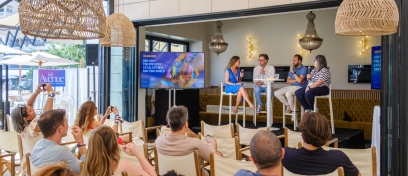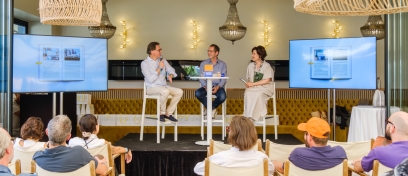For partners, For brands
OOH and eco-friendly advertising: raising the standards for sustainability
ENVIRONMENT AND OOH: GENERAL TRENDS
The growing importance of sustainability has been one of the key marketing trends of recent years. This represents a real cultural shift: across all industries, communicating sustainability messaging effectively now ranks among the most important aspects of brand strategy. According to a study examining the future of sustainability, 83% of respondents would pick a brand that has a better record of sustainability, and companies that build sustainability into their core strategies are outperforming those that fail to show leadership – displaying an 18% higher ROI, 50% lower volatility of earnings and 21% stronger dividends, according to one study.Not only does the out-of-home (OOH) industry provide a platform for brands to promote their sustainable credentials, the sector is pushing the boundaries of social innovation itself with the rapid growth of digital out-of-home (DOOH).
Global spending on advertising DOOH – fuelled by the emergence of a programmatic marketplace and data-driven campaigns – is expected to grow 10.1% each year between 2018 and 2021, accounting for most growth in the OOH market.
DOOH has several advantages from a green point of view. Digital displays can be used to showcase multiple messages sequentially without needing any extra materials, and digital solutions are designed to last several years. The sustainable credentials of DOOH will only increase with time: the industry is quickly shifting towards LED lighting to deliver the same high standards of quality with lower electricity requirements.
Major environmental initiatives taken by big OOH players – such as rolling out LED tubes, recycling paper and plastic and monitoring waste sorting – reflect this shift towards digitalisation. Innovation drives greener practices in OOH – which enables the industry to truly incorporate sustainability in its core processes.

JCDECAUX: LEADING THE WAY IN ENVIRONMENTALLY FRIENDLY OOH
Transforming challenges into opportunitiesOf course, there's always room for improvement. OOH media owners should approach the issue of sustainability by seeking to transform major challenges into innovative and competitive opportunities. Between 1998 and 2017, 77% of natural disasters were climate-related, up 9% from the previous 20 years and causing increasing economic losses (+151%, according to the UN Office for Disaster Risk Reduction).
Faced with this harsh reality, OOH media owners have significant opportunities to reinforce their role as a force for social good in the urban environment by developing new services for cities to improve climate change resilience.
These could include pollution measurement sensors to provide alerts on poor air quality, warnings for extreme climate events, and initiatives to help develop biodiversity in cities such as revegetating street furniture.
Another major shift is the rise of the collaborative sector, which will be worth €335 billion worldwide by 2025, according to PwC – being able to use an asset is becoming more important than owning it. The economic model on which JCDecaux is built perfectly fits this shift - we manage and control our entire value chain to deliver products and services that meet citizens and users’ expectations.
Given their population density, cities have naturally become the centre of the sharing economy, meaning out-of-home media owners have an important role to play. JCDecaux’s Cyclocity scheme is a prime example of a successful collaborative initiative: the first urban bike-sharing scheme created in 2003, over 31,000 bicycles have been made available in 57 cities and 13 countries to date. Cyclocity is easy and cheap to use, with bikes conveniently spread out around the city. It represents a genuine supplement to using cars or public transport – which aligns perfectly with our core belief of incorporating green practices in everything we do.
To convert as many people as possible to a greener lifestyle, 2018 saw the roll-out of the first power-assisted bicycles. Usage data from Cyclocity, such as station locations, bicycle availability and parking places, are also available online in real time. Anyone can use this data to provide innovative and useful services to users – through an app, for instance. With such a wealth of information out there on Cyclocity, there’s no excuse not to grab one and start cycling!

OUR MAIN EFFORTS SO FAR
In OOH, two main factors account for greenhouse gas emissions: energy consumption associated with operational assets; and sourcing and disposing of the paper and plastics used to run campaigns. JCDecaux has made considerable strides in both areas.Cutting down on electricity, fuel and energy consumption
JCDecaux is the first OOH media company to join the RE100 initiative, bringing together business around the world to promote 100% renewable electricity (more information can be found here).
Since 2016, 71% of JCDecaux markets have at least partially replaced existing lighting with LEDs in their furniture. Our green energy goal is to cover 100% of our electricity consumption from renewable sources by 2022 – we are currently on track with a 2018 record of 69%!
Additionally, we select all new vehicles for our posting, cleaning and maintenance fleet, which consists of more than 5,500 vehicles, based on their environmental impact. We organise maintenance and posting schedules by furniture type and location to reduce journey times and fuel consumption, and we have deployed our own eco-driving programme in 55% of the countries where we operate. The programme trains all employees who use a company car to optimise their driving style to reduce fuel consumption and improve road safety.
Waste management and recycling
OOH fits into the circular economy and has a naturally sustainable business model - street furniture can be reused several times and lasts for around 30 years. This significantly reduces the environmental impact from extracting raw materials and producing new furniture.
We also take an environmentally-friendly approach to building our furniture. Our view is that there is no better way to predict the future than to create it. We future-proof our products by ensuring that materials are separable. Combined with the use of recyclable materials such as steel and glass, this reduces the greenhouse house emissions linked to the extraction of raw materials over the total furniture life cycle by 14%.
On a global level, we have recycled 68% of our waste to date, with countries recycling or recovering up to 98.5% of all waste! Paper represents 41% of the waste we sort. The paper posters printed by JCDecaux must be certified by internationally recognised third parties such as PEFC, FSC or a local equivalent depending on the country, guaranteeing that the paper sourcing process is managed responsibly. All of our paper posters must be recycled or recovered. For our canvases, JCDecaux is committed to reducing the use of PVC where possible by using alternative plastics or less-polluting materials, and we primarily use recyclable materials.


JCDecaux was founded with the aim of providing a service to the city and the people who live in it by improving the urban environment, boosting quality of life and helping brands communicate their message. We remain the most efficient medium for brands to showcase their work – and today we recognise that part of our service to cities is helping safeguard them for generations to come.



